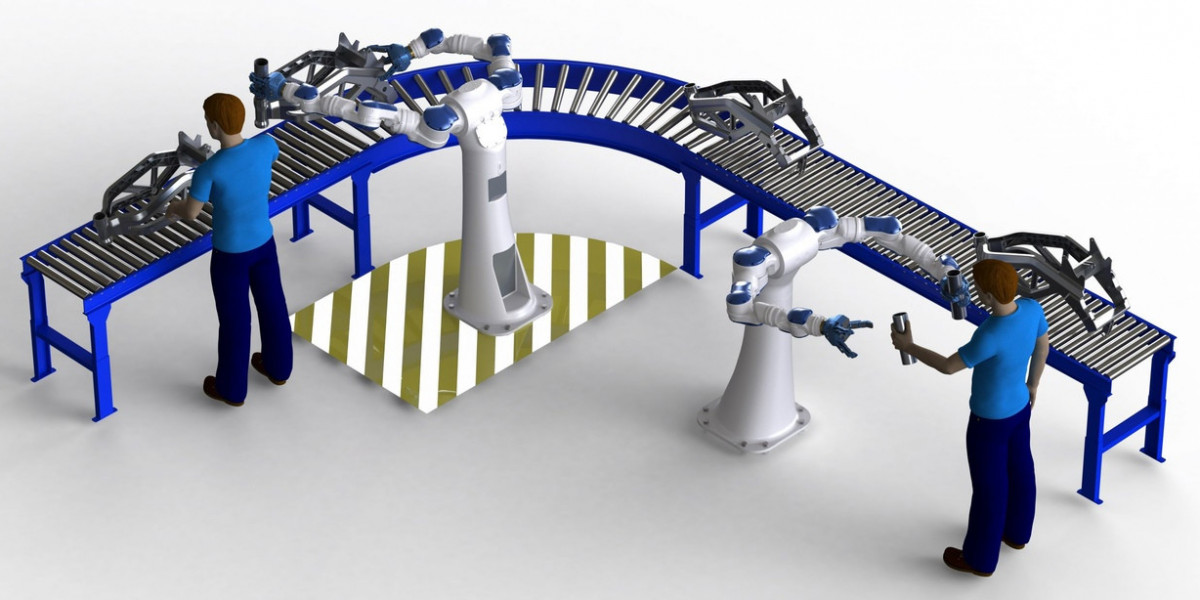Collaborative robots, or cobots, have experienced explosive growth in recent years, disrupting various industries and reshaping the future of automation. Unlike traditional industrial robots that operate in isolation or within fenced-off environments, collaborative robots are designed to work alongside humans, making them versatile, safe, and more accessible for small and medium-sized enterprises (SMEs). These advancements in cobot technology have had far-reaching impacts across different sectors, including manufacturing, healthcare, logistics, and agriculture.
The collaborative robots market is witnessing disruptions driven by several key factors, including technological advancements, evolving labor demands, and cost reduction. These factors are helping cobots outperform traditional robots by providing a more seamless integration between humans and machines. Below are some of the prominent market disruptions influencing the rise and success of collaborative robots:
1. Improved Human-Machine Interaction (HMI)
Earlier versions of robots required specialized training and were isolated from human workers due to safety concerns. However, modern collaborative robots are equipped with sensors, cameras, and advanced algorithms that allow for safe interactions with people. These robots can recognize and respond to changes in human behavior, enhancing collaboration. As a result, they provide more personalized automation solutions and facilitate a harmonious human-machine work environment. Industries like assembly lines and packaging are benefitting from these robots, allowing human workers to focus on higher-level tasks while leaving repetitive and dangerous actions to the cobots.
2. Cost-Effective and Flexible Automation
One of the key disruptions in the collaborative robots market is the reduction in costs associated with automation. Cobots, compared to traditional robots, require fewer adjustments and less programming, making them more affordable for small and medium enterprises. Their flexibility, which allows them to be reprogrammed for different tasks, further lowers costs, particularly in industries that face fluctuating demands. Startups and SMEs now have the opportunity to leverage automation, often unattainable in the past due to high initial investment costs in large industrial robots.
3. Rising Labor Shortages and Labor Cost Pressures
Many industries are facing severe labor shortages and increasing labor costs, pushing the need for automation solutions that reduce reliance on human labor. The COVID-19 pandemic exacerbated these issues, creating new workforce shortages and increasing the demand for contactless operations. Collaborative robots offer a way to alleviate these challenges. With cobots capable of working continuously alongside human workers, businesses can better optimize their labor force without sacrificing efficiency. Moreover, cobots can be deployed in high-risk industries, like healthcare, where labor shortages combined with high-stress environments demand innovative solutions.
4. Integration of AI and Machine Learning
Another major disruption in the cobot market is the integration of artificial intelligence (AI) and machine learning (ML). With these technologies, cobots can continuously improve and adapt to new tasks or production environments autonomously. AI and ML not only make cobots smarter but also enhance their ability to communicate with each other, allowing for easier coordination and improving the efficiency of entire production processes. In logistics and healthcare, where real-time decision-making is crucial, cobots AI-powered capabilities make them invaluable assets that enhance overall productivity and customer satisfaction.
5. Collaborative Robots in Diverse Applications
The continuous expansion of collaborative robots into diverse industries is an exciting disruption. From manufacturing floors and warehouses to farms and clinics, cobots are bringing high efficiency and precision to sectors that historically lacked automation. In agriculture, for example, cobots are used for harvesting and planting crops, drastically improving farming productivity. In healthcare, cobots assist surgeons by providing precise movements and helping with tasks such as disinfecting medical tools, reducing human errors, and ensuring patient safety. As these robots evolve, they will become even more ingrained in specialized applications, further transforming these industries.
Conclusion
The disruptive forces in the collaborative robots market are changing the way businesses operate. By enabling human-machine collaboration, reducing costs, and fostering innovative solutions, cobots are driving growth in various sectors. The current trajectory suggests that the collaborative robotics revolution is only just beginning. Moving forward, advancements in artificial intelligence, machine learning, and sensor technology will continue to push cobots capabilities, creating an even greater impact in the global market.










